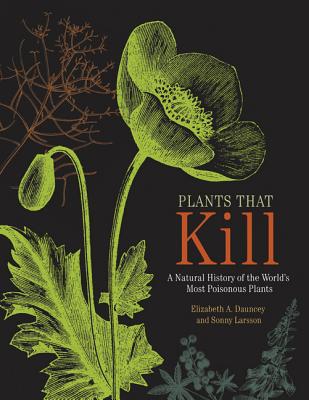

 Princeton University Press
Princeton University Press
Plants That Kill: A Natural History of the World's Most Poisonous Plants


Key Metrics
- Elizabeth A Dauncey
- Princeton University Press
- Hardcover
- 9780691178769
- 11.1 X 8.8 X 0.9 inches
- 2.55 pounds
- Nature > Plants - General
- English
 Secure Transaction
Secure TransactionBook Description
A full-color illustrated guide to the natural history of the most poisonous plants on earth
This richly illustrated book provides an in-depth natural history of the most poisonous plants on earth, covering everything from the lethal effects of hemlock and deadly nightshade to the uses of such plants in medicine, ritual, and chemical warfare.
Featuring hundreds of color photos and diagrams throughout, Plants That Kill explains how certain plants evolved toxicity to deter herbivores and other threats and sheds light on their physiology and the biochemistry involved in the production of their toxins. It discusses the interactions of poisonous plants with other organisms--particularly humans--and explores the various ways plant toxins can target the normal functioning of bodily systems in mammals, from the effects of wolfsbane on the heart to toxins that cause a skin reaction when combined with the sun's rays. This intriguing book also looks at plants that can harm you only if your exposure to them is prolonged, the ethnobotany of poisons throughout human history, and much more.
A must for experts and armchair botanists alike, Plants That Kill is the essential illustrated compendium to these deadly and intriguing plants.
- Provides an authoritative natural history of the most poisonous plants on earth
- Features hundreds of color illustrations throughout
- Looks at how and why plants produce toxins
- Describes the effects of numerous poisonous plants, from hemlock and deadly nightshade to poppies and tobacco
- Explains poisonous plants' evolution, survival strategies, physiology, and biochemistry
- Discusses the uses of poisonous plants in medicine, rituals, warfare, and more
Author Bio
Elizabeth A. Dauncey is a freelance plant toxicologist. She is the coauthor of Plants That Kill: A Natural History of the World’s Most Poisonous Plants (Princeton) and the author of Poisonous Plants: A Guide for Parents and Childcare Providers.
Source: Princeton University Press
Videos
No Videos
Community reviews
Write a ReviewNo Community reviews